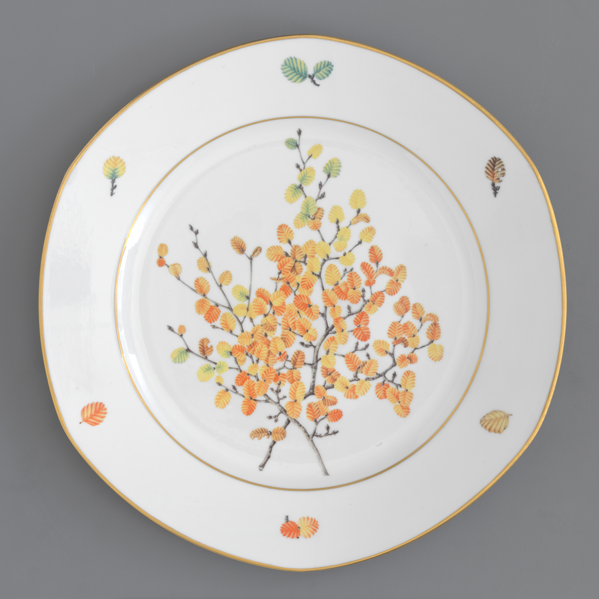april, 2019
Details
This design exhibition has a strong focus on ceramics, exploring changing expressions of Australian identity through studio crafts and design in the twentieth and early twenty first centuries. It encompasses
Details
This design exhibition has a strong focus on ceramics, exploring changing expressions of Australian identity through studio crafts and design in the twentieth and early twenty first centuries. It encompasses the arts and crafts movement, the Modernism, mid-century Australiana, the studio crafts movement, postmodernism through to the early 21stcentury.
In the early 20th century Australian designers expressed national and local identity through motifs and patterns based on native plants and, to a lesser extent, animals. This subject matter was well suited to the then internationally prevalent Arts and Crafts and Art Nouveau styles. However, after the First World War, Australian designers sought expressions of identity and uniqueness more in tune with the aesthetic influences of the Modernist style with its origins in Europe. Locally, this was complicated by a rejection of European, particularly British, traditions and a desire to find expressions and symbols specific to this country. While plants and animals continued to be important sources for design and symbolism, designers followed European artists in drawing inspiration from what was then regarded as “primitive” art by turning to Australian Aboriginal art and design. In so doing, they carelessly appropriated sacred motifs and patterns for commercial and domestic purposes. Locally, Violet Mace, influenced by the writings of Margaret Preston, was one of the earliest potters to use Australian Aboriginal motifs in her work. In the following decades, mid-century designers also freely represented Australian Aboriginal men, women and children. Though often depicted as heroic, they were also safely locked away in either the past or the distant desert. Many of the potteries producing these wares were owned by and/or employed recent migrants, who had brought with them advanced technical skills and sophisticated design aesthetics gained in European art school training. Taking as a point of departure the international Anglo-oriental movement, which favoured elemental processes, truth to materials and abstraction, some Australian potters sought non-representational modes of expression to explore identity and landscape. Local minerals were used to make clays and glazes, literally incorporating the land into the work. More broadly, vessel and sculptural forms were used to express visual and spiritual aspects of the land. In the late 1970s and the 1980s, with the advent of post-modernism, designers rejected authenticity. Pop culture and historical styles were appropriated and eclectically blended, often with an ironic humour. Design engaged with political and social issues, critiquing Australian settler culture and the colonial cringe amongst other things. The tail end of this period also saw a resurgence of Australian Indigenous art. In Tasmania, Indigenous designers and craftspeople used the traditions of their people to reconnect with both their history and their land, revealing a degree of intimate knowledge far deeper than suggested by the few charismatic species that had been favoured in European Australian design.
Image: Lauren Black (b. 1971, artist); Les Blakebrough (b. 1929, maker); Southern Ice Porcelain Pty Ltd (retailer)
Display plate: Nothofagus gunnii – Deciduous beech, 2004. Glazed porcelain with printed transfer enamels and gold lustre.
30 x 29.3 x 2.6 cm
P2017.19.4
Time
April 29 (Monday) 10:00 am - December 31 (Tuesday) 4:00 pm
Location
Tasmanian Museum and Art Gallery
Dunn Place, Hobart

